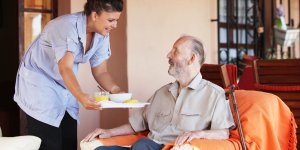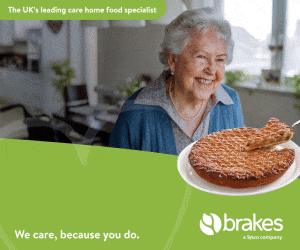Hallmark welcomes innovative diabetes guidelines
Hallmark Care Homes has welcomed new guidelines which focus on diabetes in the social care sector.

A care provider has welcomed a new set of guidelines designed to improve care for residents living with diabetes after the roll-out of a training scheme in three of its homes.
Hallmark Care Homes held the first of the training sessions, in collaboration with DUET diabetes, at Henley Manor in Henley-on-Thames, Chamberlain Court in Royal Tunbridge Wells and Greenhill Manor in Merthyr Tydfil.
The purpose of the training was to show care home teams how to use the latest set of comprehensive guidelines from the National Advisory Panel on Care Home Guidance (NAPCHD). In addition, care workers took part in a practical training session on blood glucose monitoring and glucometers. According to specialists working in the field, a quarter of people living in care homes across the UK have diabetes.
International diabetes expert Professor Alan Sinclair, of King’s College and fDROP, is the lead author for the guidelines, which are aimed at improving the wellbeing, quality of life and clinical outcomes of all care home residents with diabetes.
He says: “The new guidelines are essential as care home residents are recognised as being a highly vulnerable group (as evidenced also by the Covid-19 pandemic) so these recommendations will help healthcare professionals and care teams to better implement high-quality care. The document reflects the views of a fantastic panel of experts who were a joy to work with and is a great opportunity to make a difference in this care sector.”
Julie Rayner, care quality governance and compliance director at Hallmark, who worked with Professor Sinclair to develop the guidelines, says: “The development of the Management of Diabetes Guidelines for Care Homes has been an incredibly important piece of work. We are seeing more and more residents moving into our care homes with diabetes and the support and input we receive from specialist services varies greatly from area to area.”
She adds: “Other care providers must experience the same which is why these guidelines are so important as they provide a framework in which best practice can be developed and promoted. The first step for us at Hallmark was to benchmark our team members awareness of safe and effective diabetes care and their confidence in delivering such care.
“What followed on was a programme of training for our senior carers and registered nurses supporting them to become strong advocates for residents who are living with diabetes, ensuring that they can access appropriate screening services and can recognise and take timely action on any of the complications associated with diabetes.”
Lynne Reedman, Founder and Service Lead from DUET diabetes, says: “As a panel member of the NAPCHD, I can attest that the work clearly has had residents living with diabetes at the heart of it, however it also encompasses so many aspects and information right across the health and social care board to aid best practice. Those who work in the care sector do an amazing job, regardless of their role they are essentially the eyes, ears and hands of the health team (GP practice, community allied healthcare team, hospital-based clinicians etc).”
The recommendations are now available for all care homes across the country. The document reflects on the importance of sound and effective communication channels between residents and families, care homes, community nursing and diabetes services, primary care, acute hospital services, eye specialist and optometry care services, nutritional and podiatry services and the social services sector.
To access the guidance, click here.








